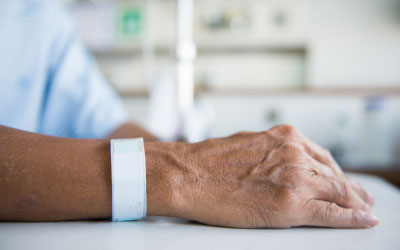Watch and Wait for Leukemia
Certain types of slow-growing chronic leukemias don’t require immediate treatment. Instead, hematologist-oncologists (doctors specializing in blood cancers) perform more frequent tests to monitor the disease. With watch and wait, treatments start only when tests indicate a cancer is progressing or symptoms worsen.
What is watch and wait for leukemia?
Watch and wait is a pre-treatment step. It’s the current standard of care for certain leukemias that don’t cause severe symptoms or life-threatening problems. You may also hear the terms watchful waiting and active surveillance.
The idea of delaying leukemia treatments may seem unsettling. However, numerous studies have shown no benefit to starting treatments when a blood cancer is stable and not causing significant or life-threatening issues.
Research indicates that many people who watch and wait have:
- Better overall health for longer because they don’t experience treatment side effects
- Same survival rates as those who start treatments soon after receiving a chronic leukemia diagnosis
- Reduced risk of developing drug resistance, which makes it harder to treat a cancer in the future
Depending on the cancer type and stage, as well as a person’s age and overall health, some people under active surveillance never need leukemia treatments.
What takes place during watch and wait for leukemia?
Watchful waiting is an active approach to managing leukemia. You or your loved one sees doctors more frequently for tests, such as:
- Blood tests at least every three to six months (sometimes weekly) to check for changes in blood counts
- Physical examinations to monitor for signs of disease progression, such as an enlarged spleen, liver, or lymph nodes
- Symptom assessments to see if problems like fever, fatigue, or recurrent infections are developing or worsening
Who benefits from watch and wait (active surveillance) for leukemia?
People with certain types of chronic leukemias may opt for active surveillance or watch and wait. Chronic leukemias tend to progress slower than acute leukemias, which are more aggressive and require immediate treatment.
Watch and wait may be the right approach for these types of leukemia and blood cancers:
When do leukemia treatments start after watchful waiting?
Doctors recommend ending watchful waiting and starting leukemia treatments when a person has:
- Anemia or extreme fatigue that affects daily functioning and quality of life
- Unexplained fevers that last for two or more weeks
- Night sweats that last for a month or longer
- Severe, painful swelling of the spleen, lymph nodes, or liver
- Significant decreases in blood cell counts
- Weight loss of more than 10% of body weight within six months
Treatment resources for you and your loved ones
Support can make a significant difference when you need leukemia treatments. Check out our directory of resources, including treatment-specific webinars, for patients, families, and caregivers.



